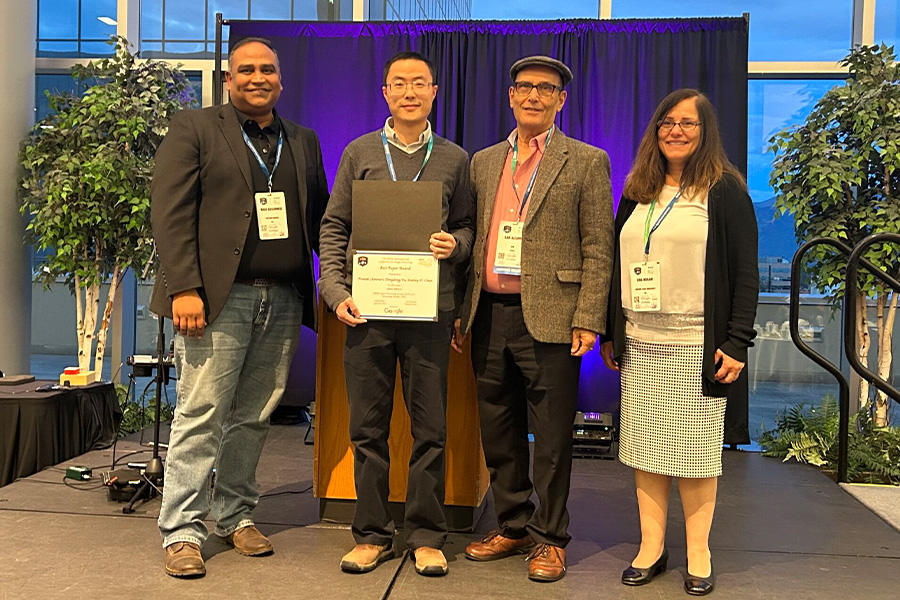Purdue ECE Research Wins Best Paper Award at IEEE ICIP
_4.gif)
A team from Purdue University’s Elmore Family School of Electrical and Computer Engineering has been recognized with the Best Paper Award at the IEEE International Conference on Image Processing (ICIP), one of the premier global conferences in the field.
The award-winning paper, titled “Quanta Diffusion,” was authored by PhD student Prateek Chennuri, with co-authors Dongdong Fu and Stanley H. Chan, Elmore Professor of Electrical and Computer Engineering.
Tackling the Challenges of Seeing in the Dark
Modern cameras have made remarkable progress, but they still struggle in extreme conditions—such as recording high-speed motion in very dim environments. Conventional CMOS sensors either produce motion blur when increasing exposure time or yield extremely noisy images when trying to capture fleeting photons at high frame rates.
That’s where a new class of sensors, known as Quanta Image Sensors (QIS), comes in. Unlike conventional image sensors that integrate many photons per pixel, QIS can detect and count individual photons with ultra-high temporal precision. This makes them powerful tools for ultra-low-light imaging, high-speed videography, 3D sensing, and scientific measurements.
For example, imagine capturing a blur-free video of a playing card moving rapidly under light levels comparable to moonlight—something that would appear either hopelessly blurred or drowned in noise with a standard camera.
But there’s a catch. Because QIS operate at the level of individual photons, their raw outputs are dominated by photon shot noise, which is a fundamental physics limit, making the images extremely noisy. The challenge is how to reconstruct clear, temporally consistent images and videos from such sparse photon streams without losing fine details or introducing artifacts.
The Breakthrough: Quanta Diffusion
That’s where the Purdue team’s method comes in. Their algorithm, called Quanta Diffusion (QuDi), is the first diffusion-model-based reconstruction method designed specifically for SPD data.
QuDi uses a generative AI framework known as a diffusion model. This is the same kind of cutting-edge technology behind many of today’s AI image-generation tools. But unlike consumer AI art apps, QuDi integrates the actual physics of how QIS collect light into the algorithm. This allows it to produce reconstructions that are not just visually convincing but also faithful to the real-world scene being recorded.
In extensive tests on synthetic and real QIS data, QuDi delivered up to 2.4 dB peak signal to noise ratio improvement over state-of-the-art algorithms, producing reconstructions that are both visually natural and faithful to the true scene, even in extreme low-light and fast-motion scenarios.

Pushing the Boundaries of Imaging
Chennuri notes that this breakthrough is not just about better pictures, it opens the door to new possibilities in science, medicine, and technology.
“Being able to see clearly in extreme conditions has implications ranging from medical imaging to autonomous driving to space exploration,” he said.
The recognition at IEEE ICIP 2025 highlights Purdue ECE’s continuous eminence and global leadership in computational imaging. Purdue researchers previously won Best Paper Awards and Best Student Paper Awards in ICIP 2015, 2016, 2021, 2023. Purdue also played a critical role in establishing the field of computational imaging, including contributing to the creation of the IEEE Transactions on Computational Imaging and the Technical Committee of Computational Imaging in IEEE Signal Processing Society.
